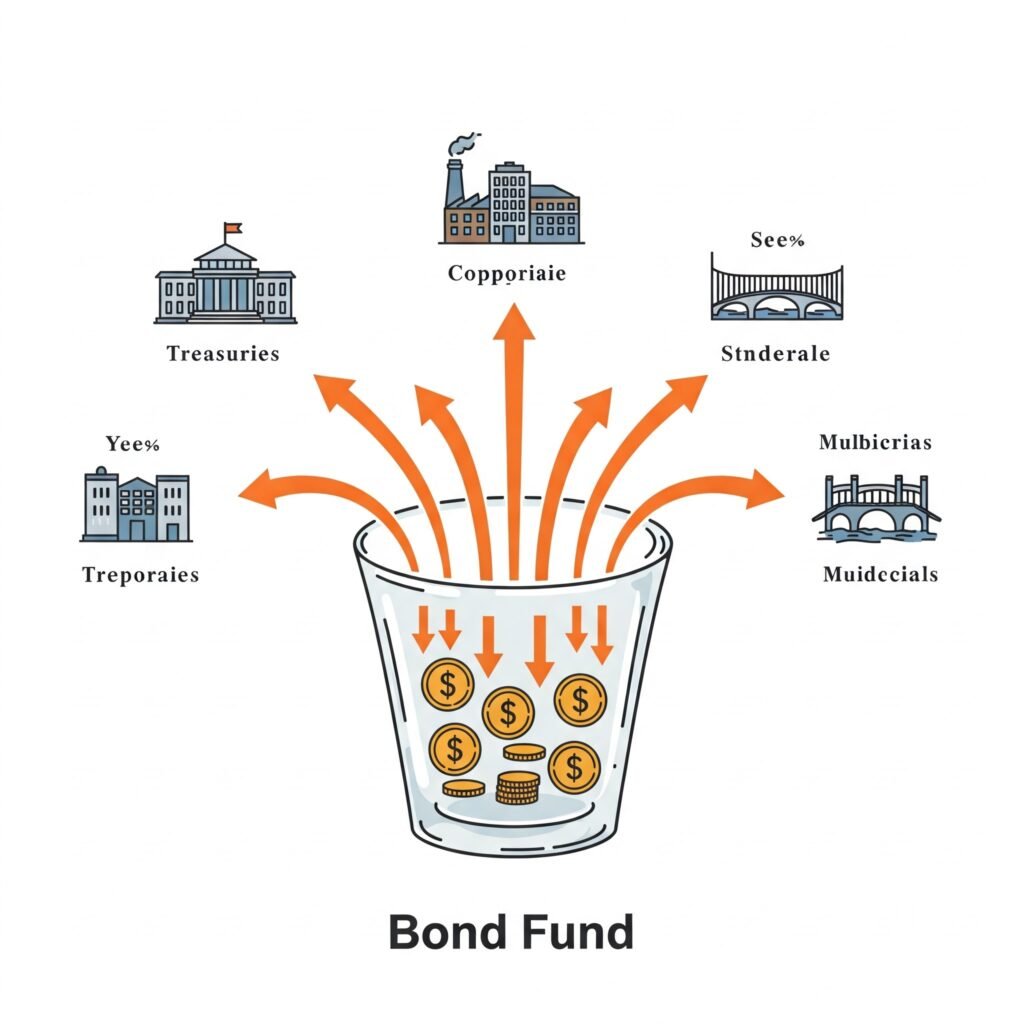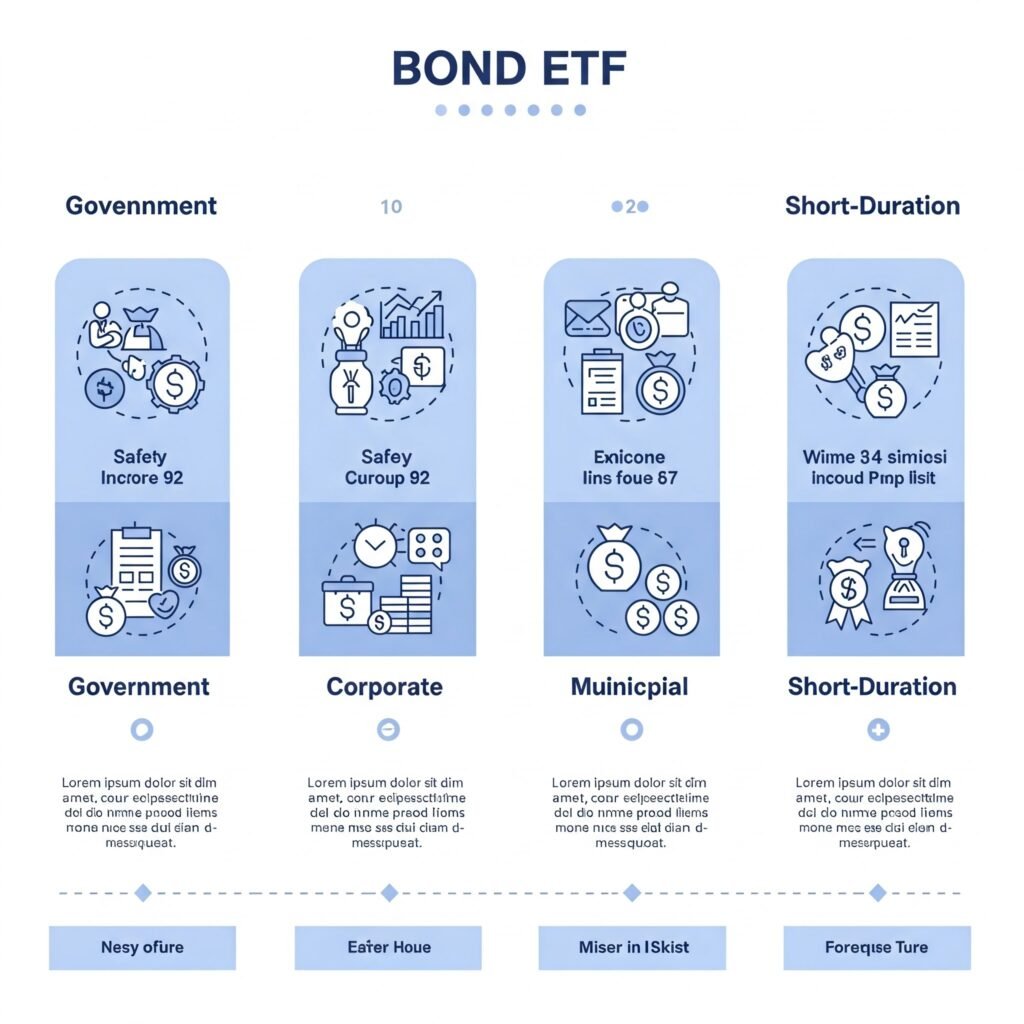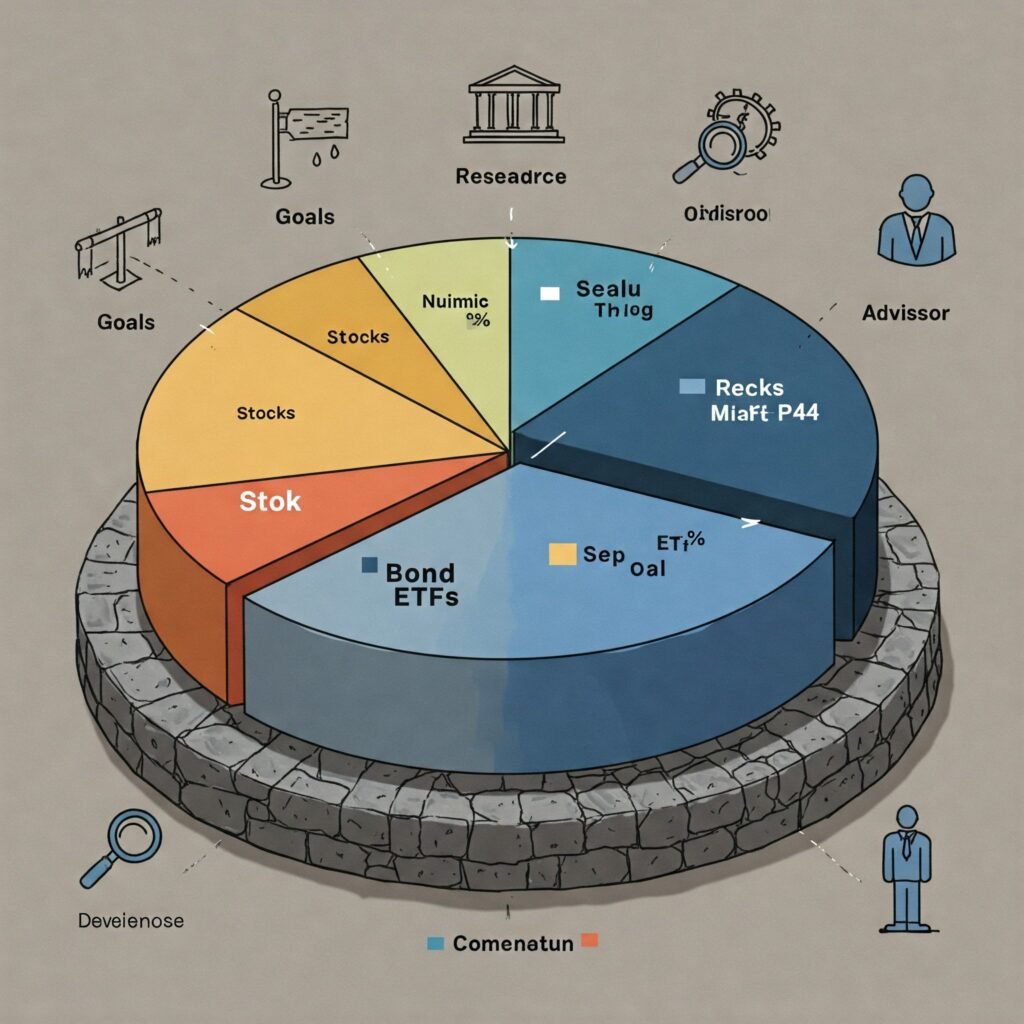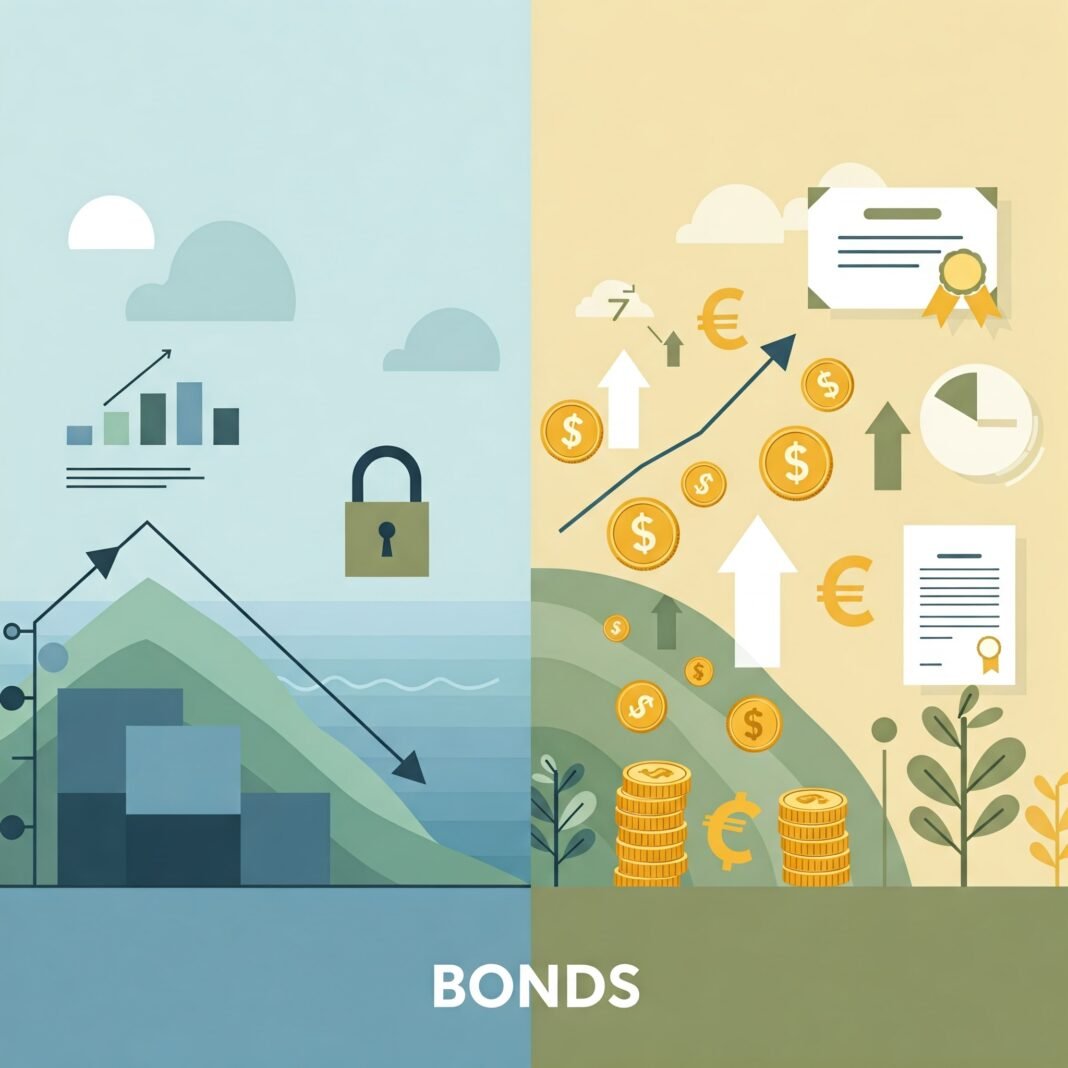In the world of investing, the allure of high returns often comes hand-in-hand with increased risk. But what if your priority is preserving capital while still generating a reliable stream of income? For many investors, especially those nearing or in retirement, or simply those with a more conservative outlook, finding investments that offer stability is key. This is where Bond ETFs for Safety and Steady Income come into play.
Bond Exchange Traded Funds (ETFs) offer a diversified, accessible way to invest in bonds. Unlike individual bonds, which can be complex to buy and sell and carry concentration risk, bond ETFs hold a basket of many different bonds. This diversification helps spread risk. For investors seeking both safety and a predictable income stream, certain bond ETFs stand out from the crowd. But how do you identify them, and what should you look for? Let’s dive in.
Understanding Bond ETFs for Income and Stability
Before we explore specific options, let’s clarify what a bond ETF is. Essentially, it’s an investment fund that trades on an exchange like a stock, but it holds a portfolio of various bonds. These bonds could be government bonds, corporate bonds, municipal bonds, or a mix. The ETF collects the interest payments from these bonds and typically distributes them to shareholders as regular income (usually monthly).
Why consider Bond ETFs for Safety and Income?
- Diversification: Instantly gain exposure to dozens, hundreds, or even thousands of different bonds, reducing the impact of any single bond defaulting.
- Liquidity: Bond ETFs are much easier to buy and sell throughout the trading day compared to individual bonds.
- Lower Costs: Often have lower expense ratios compared to traditional bond mutual funds.
- Transparency: You know what types of bonds the ETF holds.
However, it’s crucial to remember that “safety” is relative. While bonds are generally considered less volatile than stocks, bond ETFs still carry risks, including interest rate risk and credit risk.
Balancing Safety and Income with Bond ETFs
Finding the right balance between safety and income is the core challenge when selecting Bond ETFs for Safety and Income. Generally, there’s a trade-off:
- Higher Safety: Often means investing in government bonds (like U.S. Treasuries) or highly-rated corporate bonds. These typically offer lower yields (income) because the risk of default is minimal.
- Higher Income: Usually involves taking on more risk, such as investing in lower-rated (high-yield or “junk”) corporate bonds or bonds with longer maturities (more sensitive to interest rate changes).
The key is to find ETFs that focus on high-quality bonds that still provide a respectable, consistent income stream without exposing your capital to excessive risk.

Key Considerations for Bond ETFs Focusing on Safety and Income
When evaluating Bond ETFs for Safety and Income, keep these factors in mind:
- Credit Quality: Look at the average credit rating of the bonds held by the ETF. ETFs focusing on AAA, AA, A, and BBB-rated bonds (Investment Grade) are generally considered safer than those holding BB or lower (High Yield).
- Duration: This measures a bond fund’s sensitivity to interest rate changes. A higher duration means the ETF’s price will likely fall more if interest rates rise. For safety, especially in uncertain interest rate environments, shorter or intermediate-duration ETFs (typically 1-10 years) are often preferred.
- Yield: While important for income, don’t chase the highest yield blindly. A very high yield might indicate higher risk. Understand where the yield comes from. Look at the SEC Yield, which provides a standardized measure of the income generated after expenses.
- Expense Ratio: This is the annual fee charged by the ETF. Lower expense ratios mean more of the return stays in your pocket.
- Specific Bond Types: Different types of bonds behave differently.
Exploring Different Types of Bond ETFs for Safety and Steady Income
Here are some categories of bond ETFs often considered for their combination of safety and income:
Government Bond ETFs for Safety and Income
These funds primarily hold bonds issued by governments or government agencies.
- U.S. Treasury ETFs: Hold bonds like Treasury bills, notes, and bonds. These are considered among the safest investments globally because they are backed by the U.S. government’s full faith and credit. Income is generally lower than corporate bonds, but safety is very high.
- Government Agency ETFs: Hold bonds from agencies like Fannie Mae or Freddie Mac. While not direct obligations of the U.S. Treasury, they are generally considered very safe.
Investment-Grade Corporate Bond ETFs for Safety and Income
These funds hold bonds issued by corporations with high credit ratings.
- These offer a balance of safety and typically higher income than government bonds. The companies are considered financially stable, reducing the risk of default significantly compared to high-yield bonds. Duration varies by ETF.
Municipal Bond ETFs for Safety and Income
These hold bonds issued by state and local governments.
- A key feature is that the income generated is often exempt from federal income tax, and sometimes state and local taxes as well, depending on where you live. This can make their after-tax yield very attractive for investors in higher tax brackets. Safety varies depending on the credit quality of the issuing municipality.
Short-Duration Bond ETFs for Safety and Income
These funds focus on bonds that mature in the near future (e.g., 1-5 years).
- Their prices are less sensitive to interest rate changes than intermediate or long-duration funds, making them generally safer from interest rate risk. The trade-off is usually a lower yield compared to longer-duration bonds.

Top Picks: Best Bond ETFs for Safety and Steady Income
Based on the criteria of credit quality, duration (leaning towards intermediate or short), and consistent income, here are a few popular and highly-regarded examples often considered by investors seeking Bond ETFs for Safety and Steady Income:
- Vanguard Total Bond Market ETF (BND): This is a widely diversified fund holding U.S. investment-grade bonds, including government, corporate, and mortgage-backed securities. It offers broad exposure, reasonable income, and relatively low risk within the investment-grade universe. Its duration is intermediate.
- iShares Core U.S. Aggregate Bond ETF (AGG): Similar to BND, AGG tracks the Bloomberg U.S. Aggregate Bond Index, providing broad exposure to the U.S. investment-grade bond market. It’s a core holding for many seeking diversification, safety, and income. Also intermediate duration.
- iShares iBoxx $ Investment Grade Corporate Bond ETF (LQD): Focuses specifically on U.S. dollar-denominated, investment-grade corporate bonds. It offers higher yield potential than broad market or government bond funds, while still maintaining a focus on higher credit quality. Duration is typically intermediate to long-intermediate.
- Vanguard Tax-Exempt Bond ETF (VTEB): A popular choice for tax-conscious investors, holding a diversified portfolio of investment-grade municipal bonds from across the U.S. The income is generally federal tax-exempt. Safety depends on the underlying muni credits, but the ETF focuses on investment grade.

Important Disclaimer: The ETFs mentioned are popular examples for illustrative purposes only. This is not a recommendation to buy or sell any specific security. Investment decisions should be based on your individual financial situation, risk tolerance, and investment goals. Always conduct your own thorough research or consult with a qualified financial advisor.
Integrating Bond ETFs for Safety and Income into Your Portfolio
Adding Bond ETFs for Safety and Income can be a strategic move to:
- Reduce Overall Portfolio Volatility: Bonds tend to be less volatile than stocks and may perform well when stocks are declining.
- Generate Reliable Income: The regular distributions can provide cash flow.
- Diversify Risk: Avoid having all your investments tied to stock market fluctuations.
The allocation to bond ETFs will depend heavily on your age, risk tolerance, and financial goals. Younger investors with a long time horizon might have a smaller allocation, while those nearing or in retirement might have a larger portion dedicated to these more conservative investments.
Actionable Steps for Investing in Bond ETFs for Safety and Income
- Define Your Goals: Are you prioritizing maximum safety, maximum income, or a balance?
- Assess Your Risk Tolerance: How comfortable are you with potential price fluctuations in your bond holdings?
- Research ETF Options: Look at the specific holdings, duration, credit quality mix, yield, and expense ratio of ETFs in the categories mentioned. (See resources like ETF provider websites or financial data platforms).
- Consider Tax Implications: Municipal bond ETFs can be very efficient for taxable accounts if you are in a high tax bracket.
- Start Small (If New): You don’t have to invest a large sum at once.
- Monitor and Rebalance: Periodically review your bond ETF holdings as part of your overall portfolio and rebalance as needed to maintain your desired asset allocation.
Conclusion
For investors seeking a combination of capital preservation and steady income, Bond ETFs for Safety and Steady Income offer a compelling solution. By understanding the different types of bond ETFs, assessing key factors like credit quality and duration, and considering how they fit into your overall financial picture, you can make informed choices to build a more resilient and income-generating portfolio. Remember to do your own research and consider consulting a financial professional to tailor your investment strategy to your specific needs.





